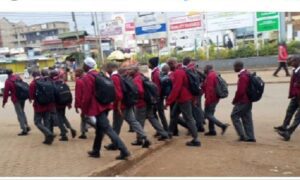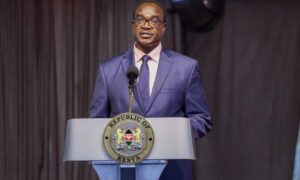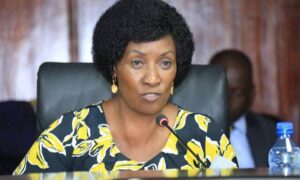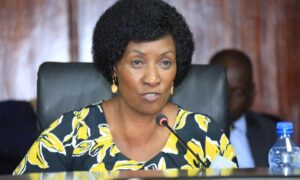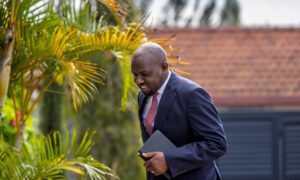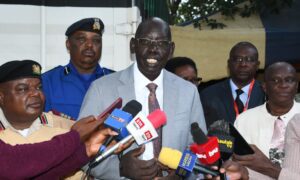June 26, 2025 – Kenya Erupts in Violence as Youth-Led Protests Met with Brutal Crackdown
Kenya was plunged into chaos on Wednesday as nationwide protests led by Gen-Z activists turned deadly, with at least eight people killed and over 400 injured in clashes with police. The demonstrations, marking the one-year anniversary of last year’s anti-finance bill protests, were met with a heavy-handed government response—including live ammunition, media blackouts, and mass arrests.
The Communications Authority of Kenya (CAK) issued a directive banning live coverage of the protests, a move condemned as unconstitutional by human rights groups. Meanwhile, reports emerged of police firing live rounds into crowds, hired goons infiltrating peaceful marches, and businesses looted in the chaos.
This is the story of a day that shook Kenya—and the youth who refuse to be silenced.
Why Were Kenyans Protesting?
The protests on June 25, 2025, were a continuation of last year’s mass uprising against the IMF-backed Finance Bill, which sought to impose harsh taxes on ordinary Kenyans while sparing the wealthy. Though the bill was eventually scrapped due to public pressure, frustrations over police brutality, corruption, and economic hardship have only grown.
This year’s demonstrations also served as a memorial for the more than 60 protesters killed in 2024—many of them young, unarmed civilians shot by police. The movement has since evolved into a broader demand for accountability, with protesters chanting: “Ruto must go!”
Key Triggers for the 2025 Protests:
- Police Brutality: The recent death of Albert Ojwang, a government critic who died in police custody, reignited anger over extrajudicial killings.
- Economic Hardship: Despite the Finance Bill’s withdrawal, inflation and unemployment remain crippling.
- Censorship: The government’s attempt to shut down live broadcasts fueled accusations of authoritarianism.
Bloodshed and Chaos: What Happened on June 25?
1. Fatalities and Injuries
According to the Kenya National Commission on Human Rights (KNCHR), at least eight people were killed—all from gunshot wounds—in six different counties:
- Machakos (2)
- Makueni (2)
- Nakuru (1)
- Kiambu (1)
- Uasin Gishu (1)
- Nyandarua (1)
Over 400 people were injured, including protesters, journalists, and police officers. At least 83 required specialized treatment, with eight suffering gunshot wounds.
One of the most tragic incidents was the death of Fred Wamale Wanyonyi, a security guard at Kenya Power’s Stima Plaza, who was fatally shot while on duty.
2. Mass Arrests and Detentions
At least 61 people were detained across the country, with many allegedly held incommunicado. The KNCHR reported cases of arrests without booking, raising fears of enforced disappearances.
3. Police Excesses
Protesters accused police of using live ammunition, rubber bullets, and water cannons indiscriminately. Videos circulating online showed officers fleeing after being overpowered by crowds in Nairobi.
4. Infiltration by Criminal Elements
In cities like Eldoret, Mombasa, and Kisumu, hired goons reportedly hijacked peaceful protests, looting shops and destroying property. Some businesses in Nairobi’s CBD were torched, leaving traders counting heavy losses.
Media Blackout: Government Silences Press
In a move condemned as “dictatorial”, the Communications Authority of Kenya (CAK) ordered all TV and radio stations to stop live coverage of the protests, citing “violations of the Constitution.”
The directive, signed by Director General David Mugonyi, referenced Articles 33(2) and 34(1) of Kenya’s Constitution—ironically, the same clauses that guarantee media freedom.
KNCHR and EFF Condemn Censorship
The Kenya National Commission on Human Rights (KNCHR) slammed the ban, stating:
“This action directly violates Article 34(2) of the Constitution, which guarantees media freedom and prohibits state interference.”
The Economic Freedom Fighters (EFF) of South Africa also issued a scathing statement:
“President Ruto has shown he is unwilling to lead with dignity. The world is watching, and Africa is watching.”
A High Court later suspended the ban, but not before several stations were yanked off air.
Gen-Z’s Defiance: “We Will Not Be Silenced”
Despite the crackdown, Kenya’s youth remained defiant. Social media was flooded with videos of protesters:
- Chanting “Ruto must go!”
- Forcing police to retreat in some areas
- Singing protest songs, including “Wantham”
One viral clip showed a Gen-Z office worker cornered and forced to sing in solidarity—a sign of the movement’s grassroots nature.
Aftermath: What Next for Kenya?
With eight dead, hundreds injured, and businesses destroyed, Kenya faces a critical moment. Key questions remain:
- Will President Ruto address protesters’ demands?
- Will police involved in killings face justice?
- Will media freedom be restored, or will censorship worsen?
The KNCHR has urged witnesses to report abuses via SMS-22359 or Toll-Free Line 0800 720 627.
Conclusion: A Nation at a Crossroads
Kenya’s youth have sent a clear message: they will not back down. But with the government responding with bullets and bans, the risk of further violence looms.
As the sun sets on a bloody day, one thing is certain—the fight for Kenya’s future is far from over.



